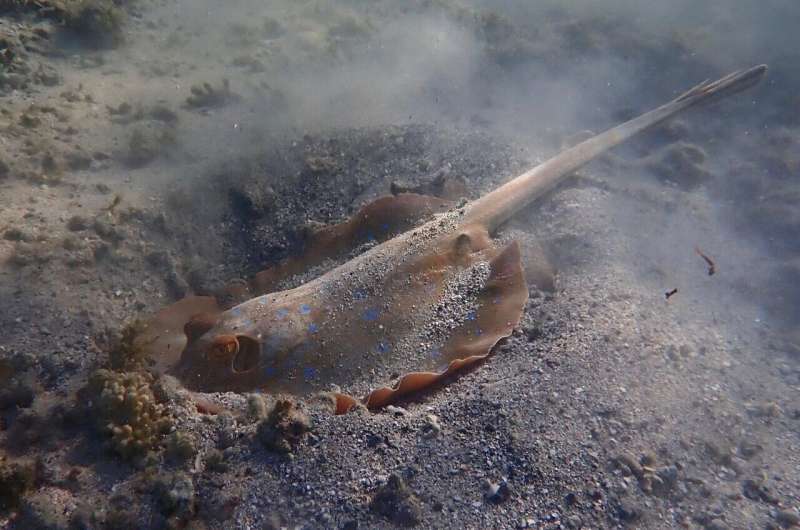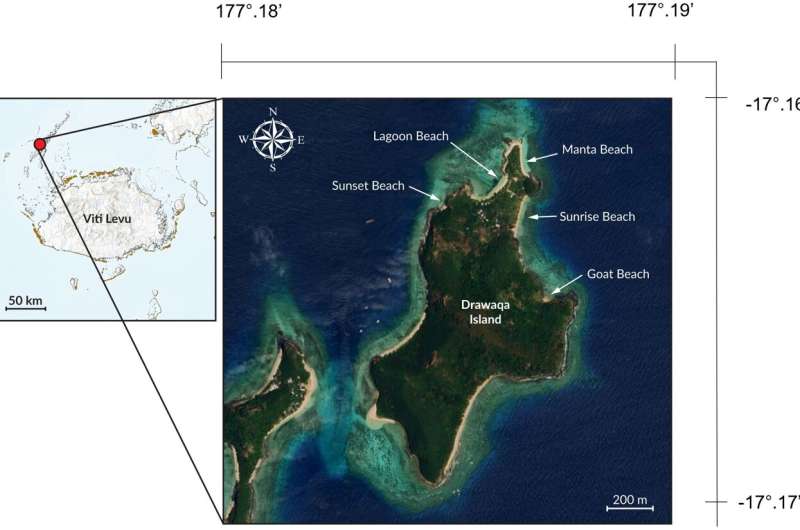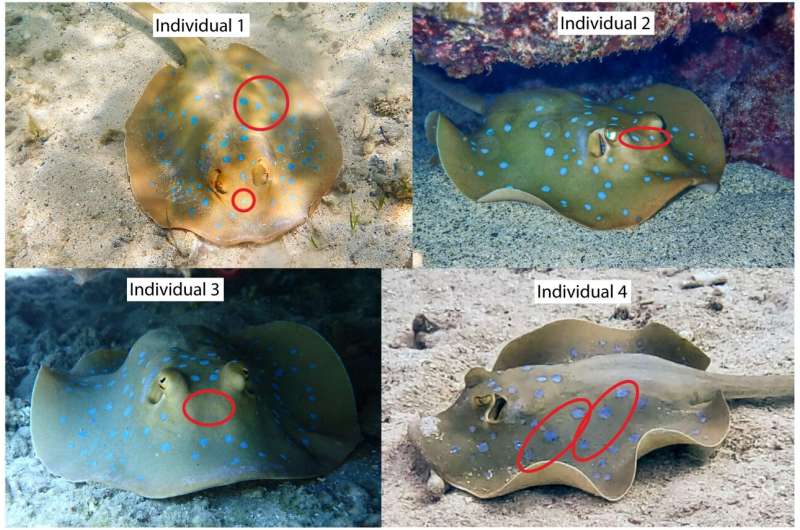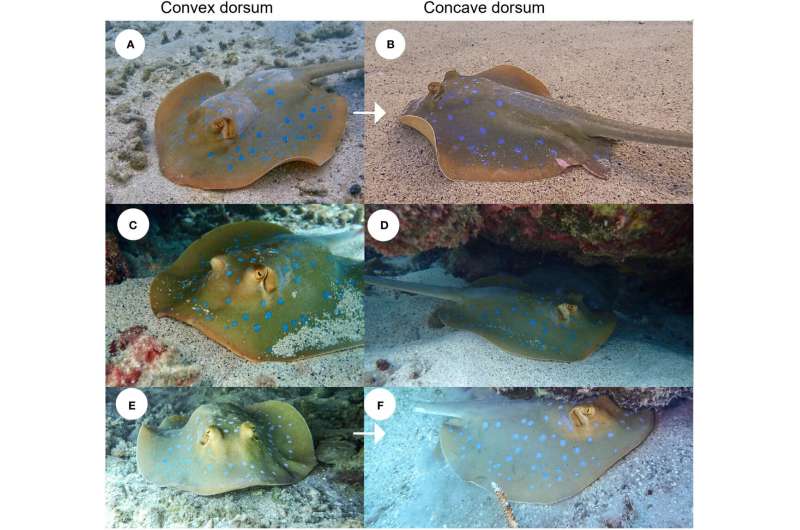July 8, 2024 feature
This article has been reviewed according to Science X's editorial process and policies. Editors have highlighted the following attributes while ensuring the content's credibility:
fact-checked
peer-reviewed publication
trusted source
proofread
New study augments distribution and reproduction data for little-known female Oceania fantail rays

Among the cartilaginous fish of the class Chondrichthyes, batoid rays—along with sharks, skates and sawfish—belong to the subclass known as Elasmobranchii. To date, limited literature exists on the reproductive practices of batoid rays, including the Oceania fantail ray, Taeniura lessoni.
Despite studies indicating that Elasmobranchs face threats from fishing, degradation of its habitat, and ocean warming, T. lessoni's IUCN conservation status is listed as Data Deficient. It is known that this nearshore species is found only in Melanesia, but its general biology, ecology, and reproductive behavior are mostly unknown.
Seeking to change this, a trio of researchers—including an independent researcher and two others from the University of the South Pacific, Drawaqa Marine Conservation Trust, and the Barefoot Manta Island Resort, all in Fiji—undertook an observational study in early 2024 on reproduction in female T. lessoni.
Their Brief Research Report, published in Frontiers in Marine Science, includes data gathered on 40 days within a three-month span at five different sites in Fiji.
According to previous findings by Last and others, "T. lessoni inhabits shallow-water coral reefs, usually at depths of 20 m and less, typically shelters in caves during the day, and forages at night," the Frontiers in Marine Science paper states.

The team focused their observation area near and on five beaches in the northern area of western Fiji's uninhabited Drawaqa Island. From January–March 2024, they documented T. lessoni appearances during 105 total observational surveys on 40 different days.
According to the research paper, "Each survey lasted 45 min for standardization, and were [sic] conducted as roving explorations, including 53 snorkel surveys, 32 beach walks, and 20 SCUBA dives." The team also noted the corresponding ocean temperature for each survey.
As frequently as they could, the researchers photographed T. lessoni specimens and recorded their individual features, noting aspects such as individual markings; size (measured by disk width [DW], the maximum distance between wingtips); convex dorsum (a sign of advanced gestation); concave dorsum (a sign of recent parturition); and fresh bite wounds (indicating procreational behavior). The presence of claspers indicated male rays, while females had none.
With limited literature on this species to guide them, the team drew occasional comparisons between their observations of T. lessoni and earlier findings on the bluespotted ribbontail ray, T. lymma, a more widely distributed nearshore species found throughout the tropical Indian and western Pacific Oceans.

Notable findings
During the study period, water temperatures ranged from 28.22° C to 33.08° C. The team observed T. lessoni specimens during 71 of their 105 surveys (67.6%). Most of these rays appeared during snorkeling (48), with another 15 appearing during beach walks and eight more—all mature adults—during dives.
"Mature females and males were mostly observed during snorkeling surveys, while immature specimens were predominantly sighted during beach walks," the researchers note.
Beginning in early January, the team observed four females (≤ 8m in depth) in advanced gestation in shallow waters at a single site. Altogether, these four females (referred to in the paper as Individuals 1–4) appeared 24 times throughout the study.
The team noted indications of parturition for three of these four between the end of February and mid-March, and the paper documents observations of ten individual neonates, which all appeared during snorkeling and beach walks.

"The presence of neonates from early March onward coincided with the estimated parturition period inferred from the rays' condition,"' the researchers write. "We were unable to determine the periodicity of the reproductive cycle and the gestation period, but T. lessoni may reproduce asynchronously and aseasonally."
Moreover, the team noticed a dermal wound near Individual 1's left pectoral fin at some point after parturition, suggesting "a bite or abrasion from a pectoral grip or pre-copulatory biting, indicating that copulation may occur soon or immediately after parturition, as observed in captive T. lymma (Smith et al., 2017). Therefore, a continuous cycle with the potential for multiple pregnancies annually seems likely," the paper states.
As a next step, the researchers suggest an acoustic telemetry study and continued collection of environmental data to shed more light on T. lessoni's presence, behavior, and site fidelity.
"Our preliminary data indicate that Drawaqa's nearshore waters likely serve as pupping grounds for T. lessoni," they conclude. "Considering this, along with the diversity of species, the easy accessibility, and the continued monitoring setup, this location is ideal for further studies to deepen our understanding of ray ecology and biology."
More information: Kerstin Glaus et al, Observational data on the reproductive condition of female Oceania fantail rays, Taeniura lessoni, from Drawaqa Island, Fiji, Frontiers in Marine Science (2024). DOI: 10.3389/fmars.2024.1401258
Journal information: Frontiers in Marine Science
© 2024 Science X Network


















